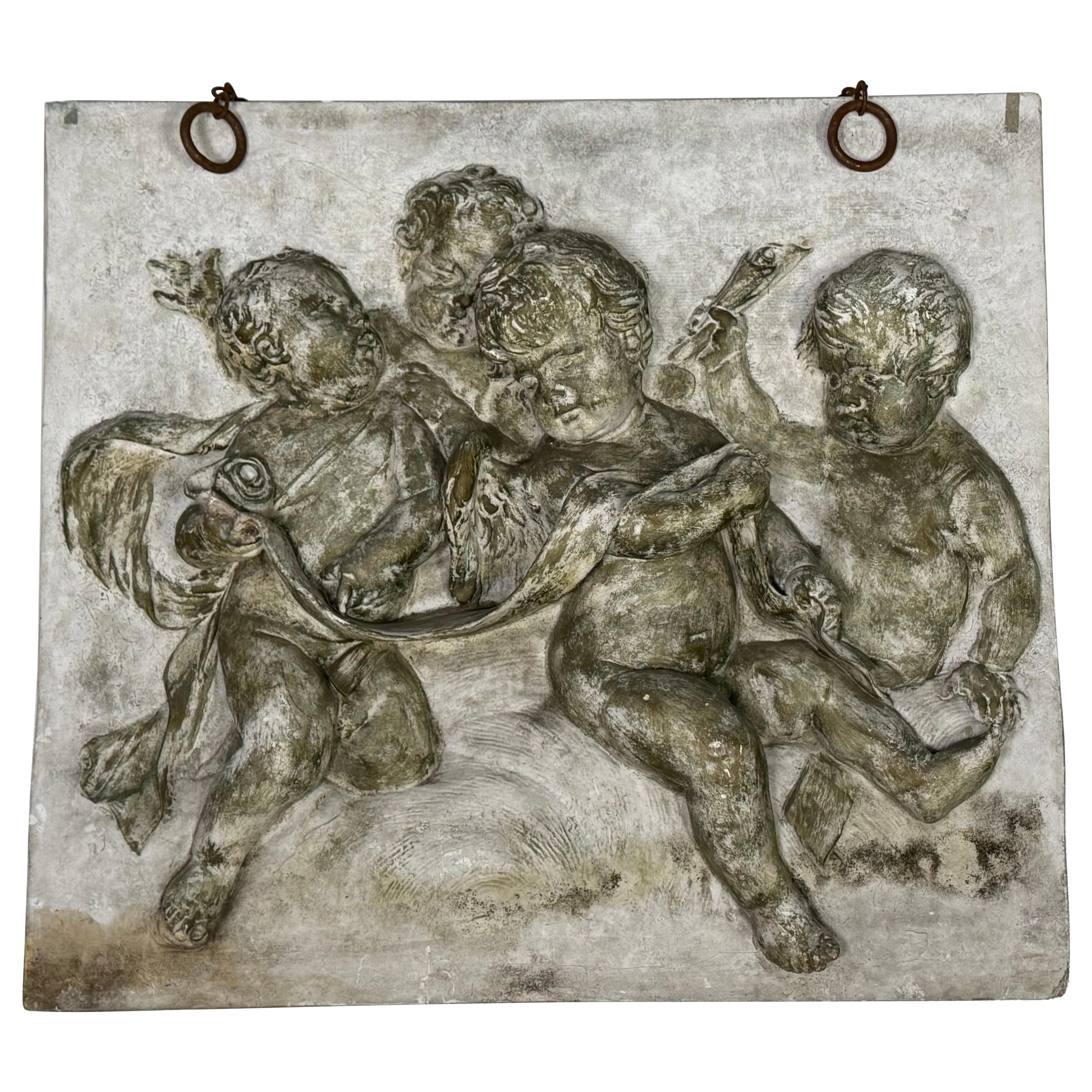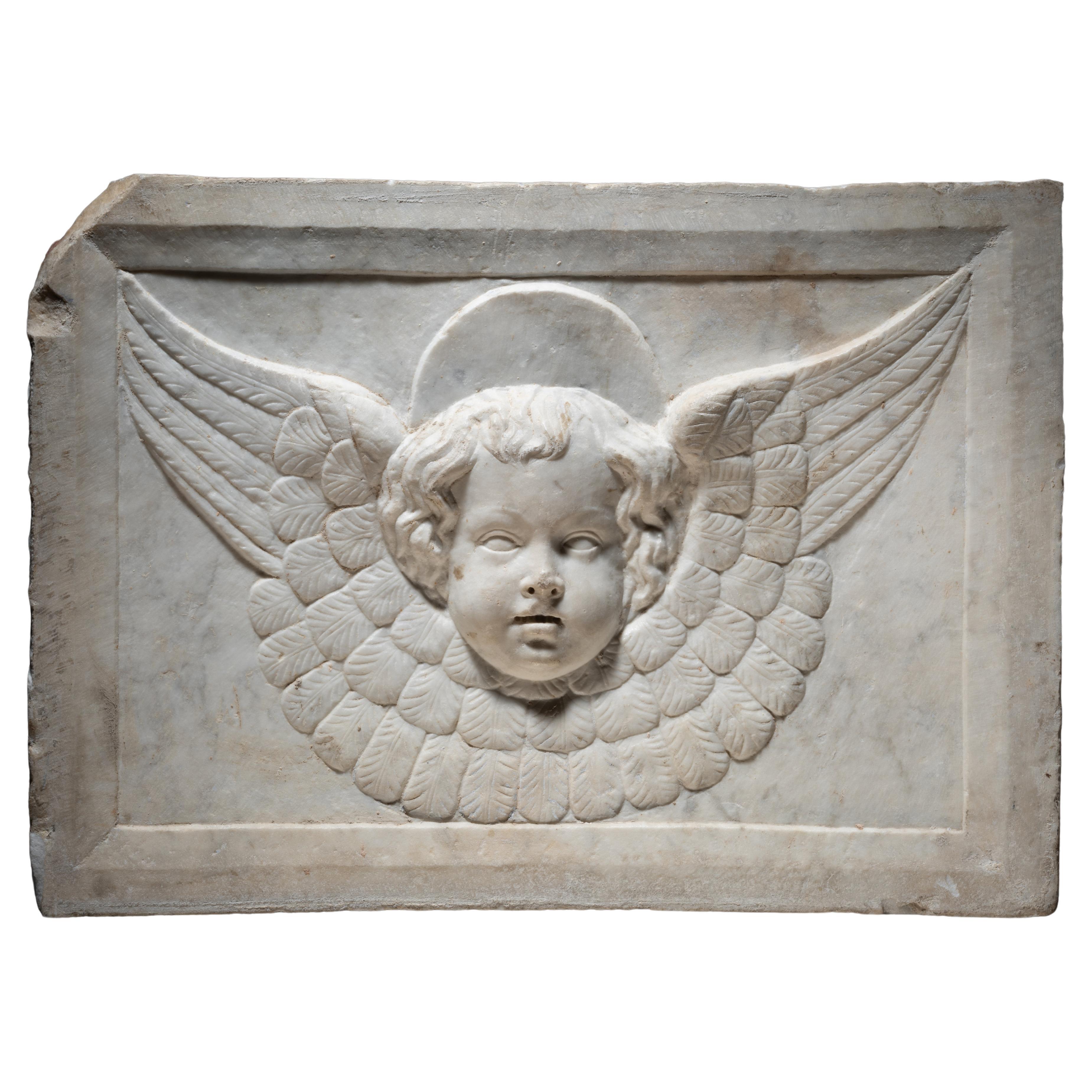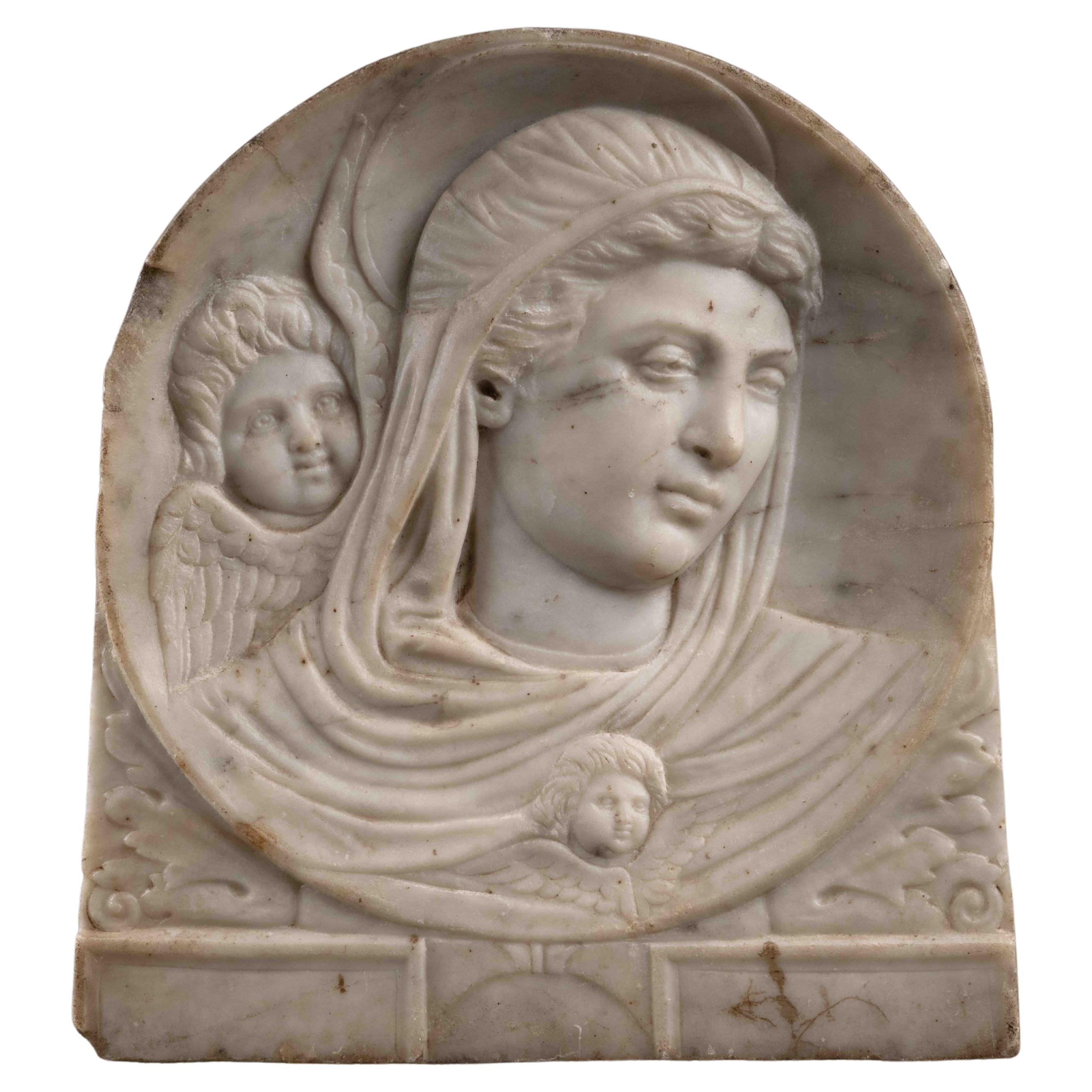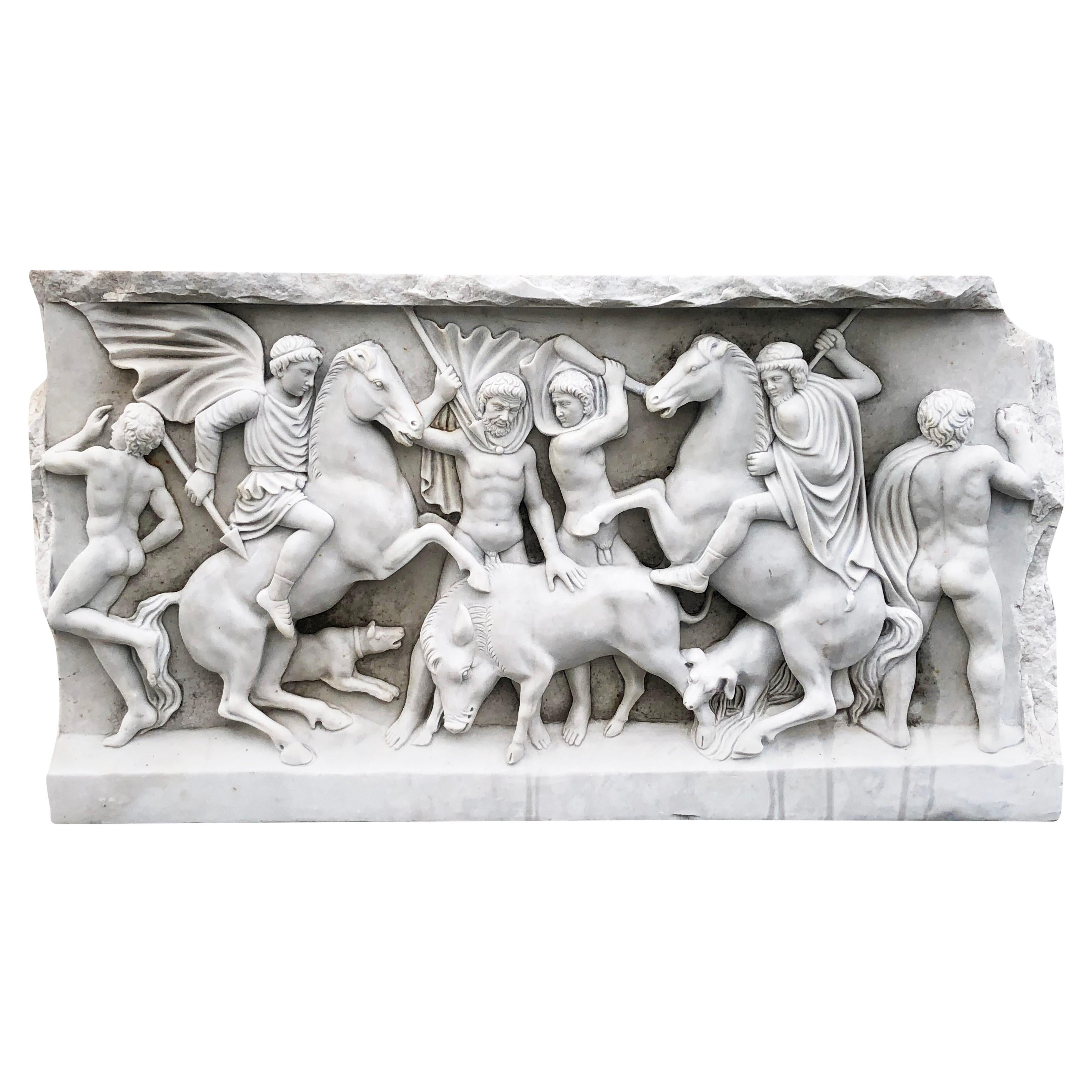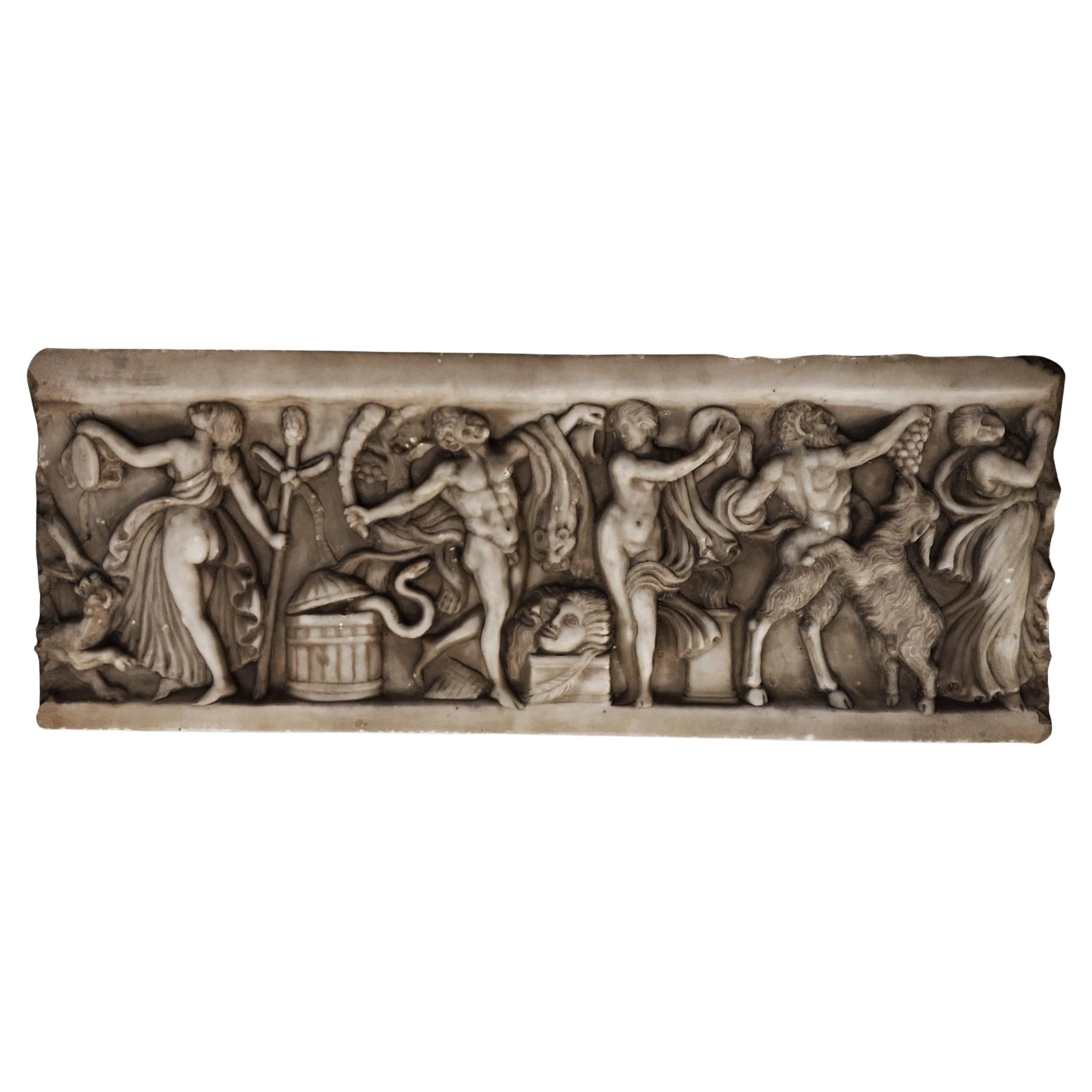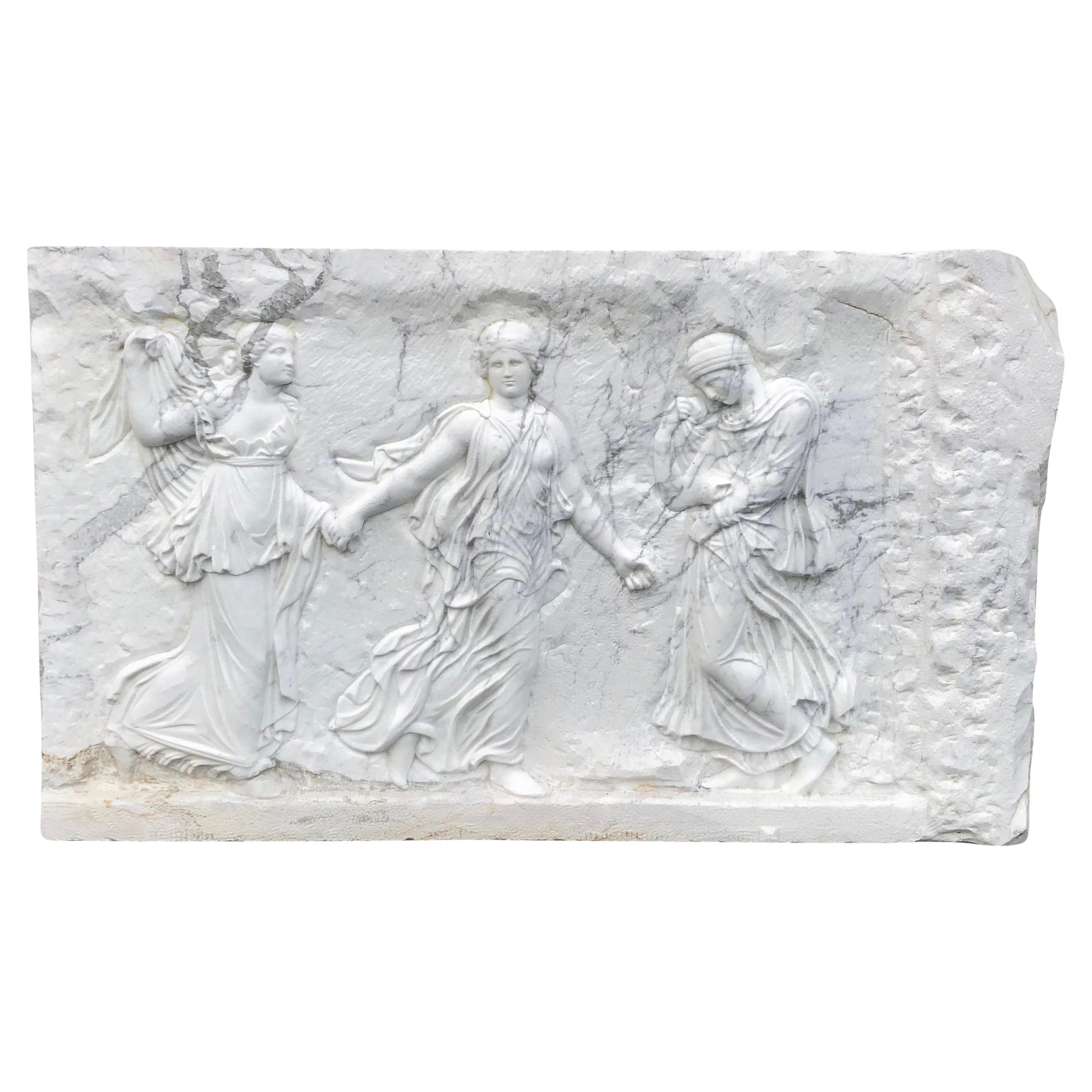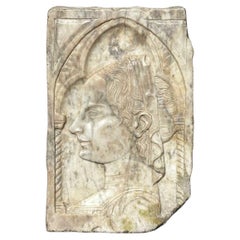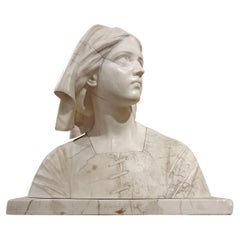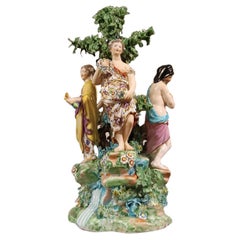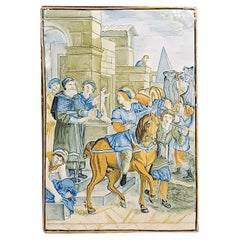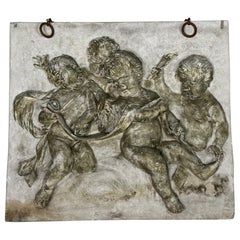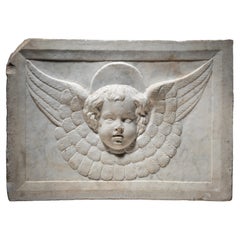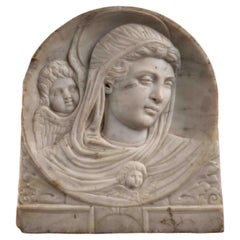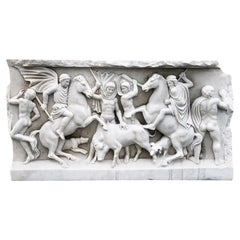Items Similar to END OF THE 19th CENTURY SINGING ANGELS PLASTER BAS-RELIEF BY LUCA DELLA ROBBIA
Want more images or videos?
Request additional images or videos from the seller
1 of 9
END OF THE 19th CENTURY SINGING ANGELS PLASTER BAS-RELIEF BY LUCA DELLA ROBBIA
$3,519.05
£2,610.94
€2,940
CA$4,906.13
A$5,319.25
CHF 2,803.24
MX$64,687.33
NOK 34,876.71
SEK 32,981.67
DKK 22,387.72
About the Item
This beautiful life-size plaster cast of the singing angels by Luca della Robbia and part of a collection of plaster casts from a Florentine collector, faithfully represents the original work present in the sculptor's famous choir. This sculpture, created for the cathedral of Santa Maria del Fiore in Florence and now kept in the Museo dell'Opera del Duomo, shows four angels with their mouths open while singing. The cast, located for a long time at the entrance of a historic Florentine building, is of high quality and has acquired a patina that makes it similar to the original. Florentine manufacture from the end of the 19th century.
Measurements: H x W x D 104 x 65 x 5cm
- Dimensions:Height: 40.95 in (104 cm)Width: 25.6 in (65 cm)Depth: 1.97 in (5 cm)
- Materials and Techniques:
- Place of Origin:
- Period:
- Date of Manufacture:1880
- Condition:Wear consistent with age and use. We remind you that the authorization of the Fine Arts is required for export. Please remember that whoever takes care of the shipment will also have to take care of the request to the Fine Arts.
- Seller Location:Firenze, IT
- Reference Number:1stDibs: LU7189240321822
About the Seller
4.0
Vetted Professional Seller
Every seller passes strict standards for authenticity and reliability
1stDibs seller since 2022
33 sales on 1stDibs
Typical response time: <1 hour
- ShippingRetrieving quote...Shipping from: Firenze, Italy
- Return Policy
Authenticity Guarantee
In the unlikely event there’s an issue with an item’s authenticity, contact us within 1 year for a full refund. DetailsMoney-Back Guarantee
If your item is not as described, is damaged in transit, or does not arrive, contact us within 7 days for a full refund. Details24-Hour Cancellation
You have a 24-hour grace period in which to reconsider your purchase, with no questions asked.Vetted Professional Sellers
Our world-class sellers must adhere to strict standards for service and quality, maintaining the integrity of our listings.Price-Match Guarantee
If you find that a seller listed the same item for a lower price elsewhere, we’ll match it.Trusted Global Delivery
Our best-in-class carrier network provides specialized shipping options worldwide, including custom delivery.More From This Seller
View AllEND OF THE 19th CENTURY MARBLE PLAQUE ATTRIBUTABLE TO DOSSENA
Located in Firenze, FI
Beautiful carved white marble plaque, depicting a noblewoman with elegant hair typical of the 14th century and inside a trefoil arch, supported by twisted columns. The plaque can be ...
Category
Antique Late 19th Century Italian Figurative Sculptures
Materials
Marble
FIRST HALF OF THE 19th CENTURY MARBLE BUST OF JOAN OF ARC
Located in Firenze, FI
An extraordinary marble bust, characterized by greyish veins, depicting the Maid of Orléans, Joan of Arc. The attribution is confirmed by the inscription "Jeanne d'Arc" on the front....
Category
Antique Early 19th Century French Figurative Sculptures
Materials
Marble
GINORI SCULPTURE "FOUR SEASONS" SECOND HALF OF THE 18th CENTURY
Located in Firenze, FI
Wonderful polychrome porcelain sculpture depicting the allegory of the four seasons. The figures personifying winter, autumn, spring and summer are harmoniously arranged around a tre...
Category
Antique Late 18th Century Italian Figurative Sculptures
Materials
Porcelain
FIRST HALF OF THE 18th CENTURY VERTICAL CASTLES MAJOLICA PLAQUE
By Castelli
Located in Firenze, FI
Beautiful vertically painted majolica plaque, attributable to the famous Castelli factory, located in Abruzzo (Central Italy), dating back to the first half of the 18th century. The ...
Category
Antique Early 18th Century Italian Ceramics
Materials
Maiolica
EARLY 19th CENTURY PAIR OF SCULPTURES "ALLEGORY OF THE ARTS"
Located in Firenze, FI
Elegant pair of biscuit small size sculptures depicting the allegory of painting and sculpture. The two works, clearly classically inspired, show two elegant and refined women, dress...
Category
Antique Early 19th Century French Figurative Sculptures
Materials
Porcelain
END OF THE 18th CENTURY ABDUCTION OF EUROPE SCULPTURE
Located in Firenze, FI
Splendide sculpture en porcelaine polychrome représentant l'enlèvement d'Europe. Cette œuvre s'inspire du mythe classique dans lequel le dieu olympien Zeus se transforme en taureau p...
Category
Antique Late 18th Century Austrian Figurative Sculptures
Materials
Porcelain
You May Also Like
Bas-Relief Artwork of Cherubic Figures C. 1900
Located in Los Angeles, CA
Wall hanging that depicts a bas-relief artwork featuring cherubic figures, inspired by Renaissance art. The relief is made plaster and horse hair and has an aged patina.
The scene ...
Category
Antique Early 1900s Italian Renaissance Wall-mounted Sculptures
Materials
Plaster
$1,920 Sale Price
31% Off
Cercle of Jacopo della Pila - Marble relief depicting a winged Cherub
Located in Bruxelles, BE
Cercle of Jacopo della Pila (Lombard, in Naples 1471-1502)
Marble relief depicting a winged Cherub
Naples, second half of15th century
40 x 57 x 12 cm
Exquisitely carved, this relief portrays a winged cherub with cascading hair and delicate features. The cherub's plump, smooth countenance, rounded cheeks, outlined lips, and finely drawn nose emanate a sense of tenderness. The quadrangular module, is adorned with a carved frame. The relief ascends gradually, transitioning from the low relief of the wings to the high relief of the head.
The rectangular frame and the subtly curved form of the artwork suggest that the relief likely adorned the upper part of an arch or a vaulted chapel. The type is that of the perspective room with a coffered ceiling decorated with figures of winged cherubs, which is found in various Neapolitan chapels of the 15th century. Coffered ceilings attest to the recovery of antiquity and the search for luxury in Renaissance architecture, first in Florence, then in Rome and Naples. The majority of the numerous family chapels and tombs built during the late fifteenth century in south of Italy employ the new formal vocabulary of the Florentine Renaissance in a self-confident manner that permitted a broad spectrum of variations.
The escalating admiration for the classical world, coupled with the development of perspective, significantly contributed to the Renaissance endorsement of coffered ceilings. This artistic and constructive device drew inspiration from the intricate marble patterns observed in historical landmarks such as the Arch of Titus, the Temple of Vesta in Tivoli, the Pantheon, and the Basilica of Maxentius. A distilled product of both mathematical and artistic cultures, deeply scrutinizing the ancient world, the coffered ceiling plays a vital role in the perspective construction of space with its regular and directional geometry. The motif of the coffered ceiling decorated with cherubs in relief was introduced in Naples by Francesco Laurana in the plastic decoration of the Arch of Castelnuovo. Laurana's impact on the art scene in the south of Italy was profound. The introduction of the winged cherub into the region's artistic vocabulary bridged the gap between the classical and the contemporary, creating a synthesis that resonated with both aesthetic and spiritual sensibilities. His influence extended beyond the immediate visual appeal, shaping the cultural identity of the Renaissance in southern Italy. Although the plastic decoration of the Arch of Castelnuovo cannot certainly be ascribed to a mature Renaissance style, it was precisely on this occasion that the sculptors who worked there could get to know and export throughout the Italian peninsula that type of "Florentine classicism" which, even in the 15th century Naples, was conditioned by the Burgundian culture imported into the Kingdom by Alfonso of Aragon himself, with artists called from Spain and Northern Europe. The coffered ceiling, with its geometric patterns and Laurana's winged cherubs nestled within, became a symbol of refinement and cultural sophistication. The relief sculptures, carefully integrated into the overall design, transformed the ceiling into a celestial realm, inviting viewers to contemplate the divine while immersed in the grandeur of the Renaissance space.
Similar winged cherubs appears also in the Naples cathedral. Within the renowned Succorpo Chapel, a mesmerizing marble coffered ceiling adorned with cherubs epitomizes the splendor of the Neapolitan Renaissance. The interplay of light and shadow on the textured surface of the marble coffered ceiling introduces an ethereal dimension, providing an immersive visual experience for observers. The geometric precision and the repeated patterns, reminiscent of classical motifs, establish a sense of harmony and balance that has become the hallmark of the Neapolitan interpretation of Florentine Renaissance aesthetics.
Although probably intended to be admired from a distance, this cherub is intricately detailed and exquisitely rendered: the face and hair are elegantly outlined and the feathers are textured through juxtaposed lines. The marble, both figurative and decorative, adheres to the principles of balance and restrained ornamentation typical of the « Florentine Classicism ». Harmonious shapes and gracefully orchestrated curves , rooted in the classical repertoire, converge to evoke a sense of ethereal beauty. The surface displays the masterful use of a chisel to intricately carve the feathers and facial features, creating an almost abstract quality.
This work is a testament to a sculptor of great skill and rich figurative knowledge, seamlessly blending classical firmness in contours with a refined treatment of the marble's surface. The combination of tradition and innovation point to a stylistic idiom from Lombardy, in particular we can find some comparaisons with the works of Jacopo della Pila, sculptor of Lombard origin working in Naples in the second half of the 15th century. He is documented there between 1471 and 1502, and is a protagonist of the Aragon Renaissance in the second half of the Quattrocento, together with the other great Northern sculptor active in the kingdom, Domenico Gagini.
the first commission he received dates back to August 9, 1471, when Jacopo publicly committed to sculpting the funerary monument of Archbishop Nicola Piscicelli to be placed in the Cathedral of Salerno. The last known work is an altar ordered on July 29, 1502, by the noble Jacopo Rocco for the church of San Lorenzo Maggiore in Naples. Between these two chronological extremes (1471-1502), we must place the fervent activity of the artist, who had trained in Rome, perhaps under the guidance of Paolo Romano but also engaged in dialogue with other major artists of the city, especially Isaia da Pisa. He enriched his experience in Naples, initially drawing inspiration from the works of Domenico Gagini and later from the Tuscan masterpieces of Antonio Rossellino and Benedetto da Maiano destined for the church of Santa Maria di Monteoliveto. Jacopo della Pila's artistic personality is thus based on a complex interplay of influences, contributing to the definition of a highly personal style.
Close comparaison can be made between our cherub and the winged angels reliefs...
Category
Antique 15th Century and Earlier Italian Renaissance Figurative Sculptures
Materials
Marble
$22,981 Sale Price
20% Off
Renaissance Marble Relief - Emilia Romagna, 1470-80
Located in Bruxelles, BE
Renaissance Marble Relief
Emilia Romagna, Faenza ? 1470-80
H 30,2 x L 33 x P 3,5 cm
The carved marble relief depicts the Virgin accompanied by a winge...
Category
Antique 15th Century and Earlier Italian Renaissance Figurative Sculptures
Materials
Marble
19th Century British Carrara Marble Roman Relief Sculpture - Antique Relief
Located in West Palm Beach, FL
This Carrara marble bas relief sculpture was hand carved in England in the late 1800s, in good condition. The antique relief sculpture depicts...
Category
Antique 19th Century English Figurative Sculptures
Materials
Carrara Marble
Large marble Bacchanal high relief, 113 cm
Located in Rome, IT
Large marble Bacchanal high relief, 113 cm
Category
Early 2000s Italian Busts
Materials
Marble
20th Century European Three Graces Statuario Marble Relief - Vintage Wall Panel
Located in West Palm Beach, FL
An antique wall relief in white Statuario marble of rectangular shape, depicting the Three Graces, in good condition. They were goddesses originate...
Category
Early 20th Century European Wall-mounted Sculptures
Materials
Statuary Marble
More Ways To Browse
Plaster Relief
Antique Plaster Relief
Italian Bas Relief
Angel Relief
19th Century Bas Relief
Florentine Original
Plaster Bas Relief
Plaster Angels
Santa Maria Del Fiore
Gesso Relief
Luca Della Robbia
Italian Della Robbia
Italian Plaster Relief
Female Pottery
Feminine Sculpture
Girl And Boy Sculpture
Glass Face Sculpture
Harlequin Figure
